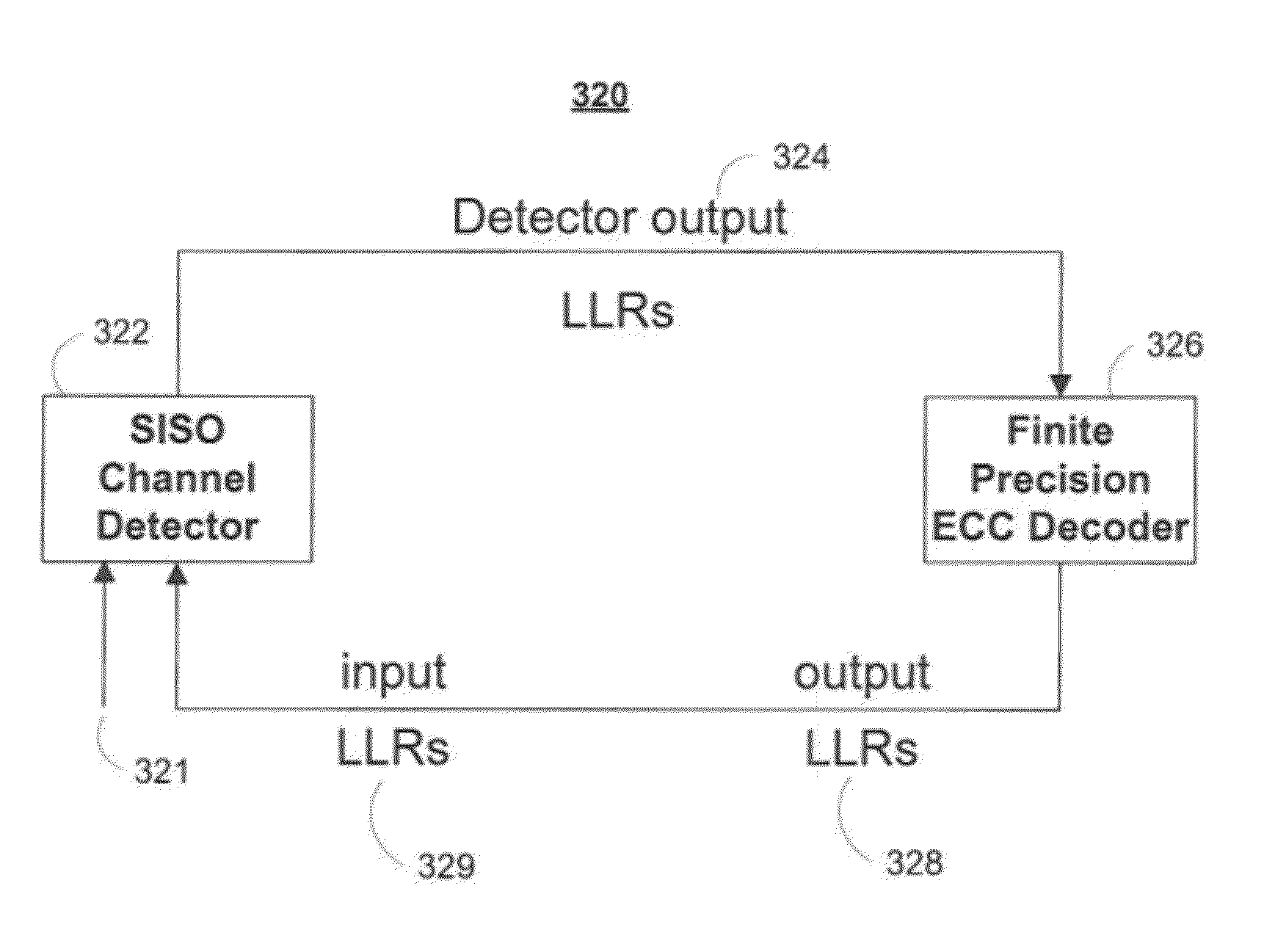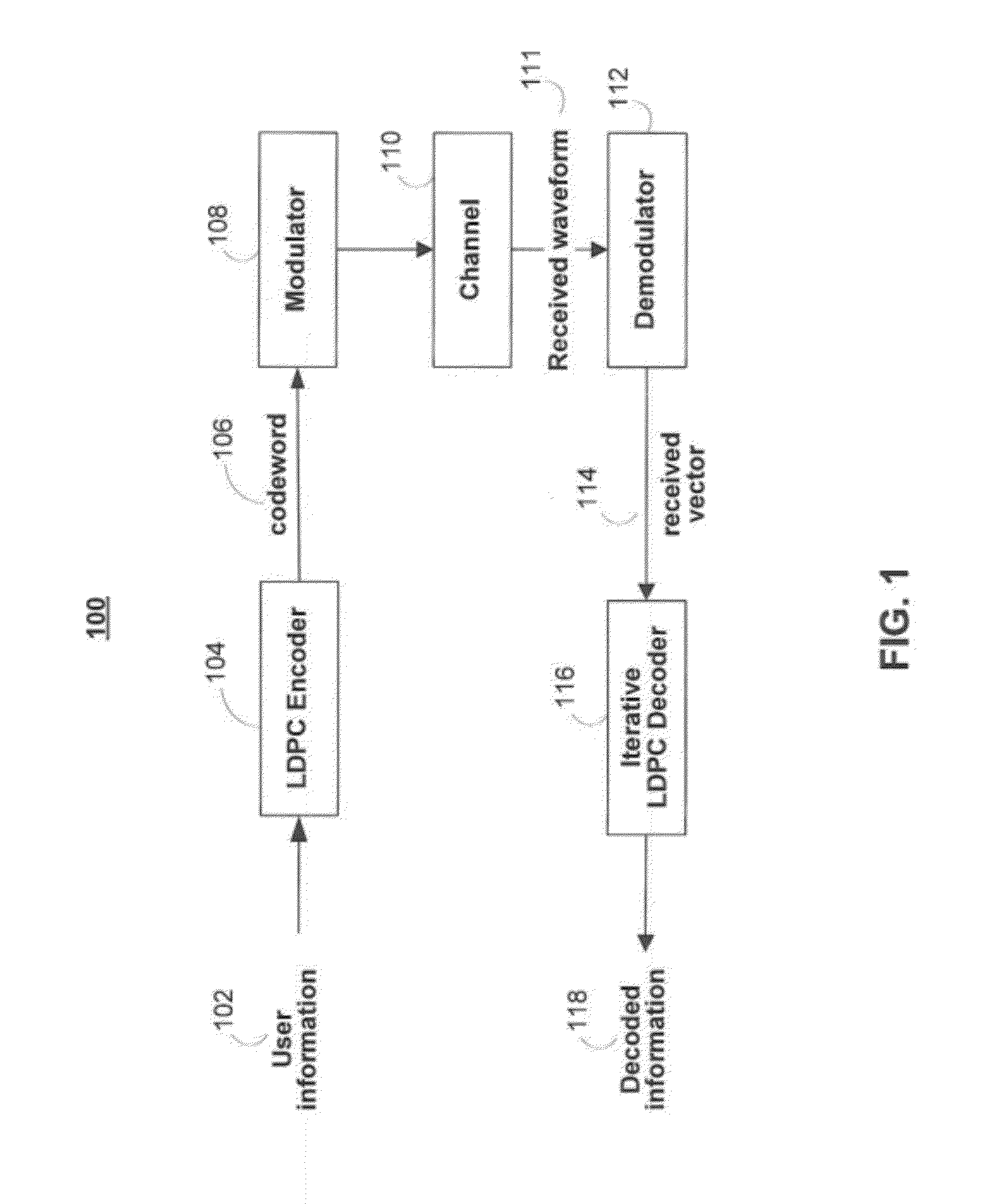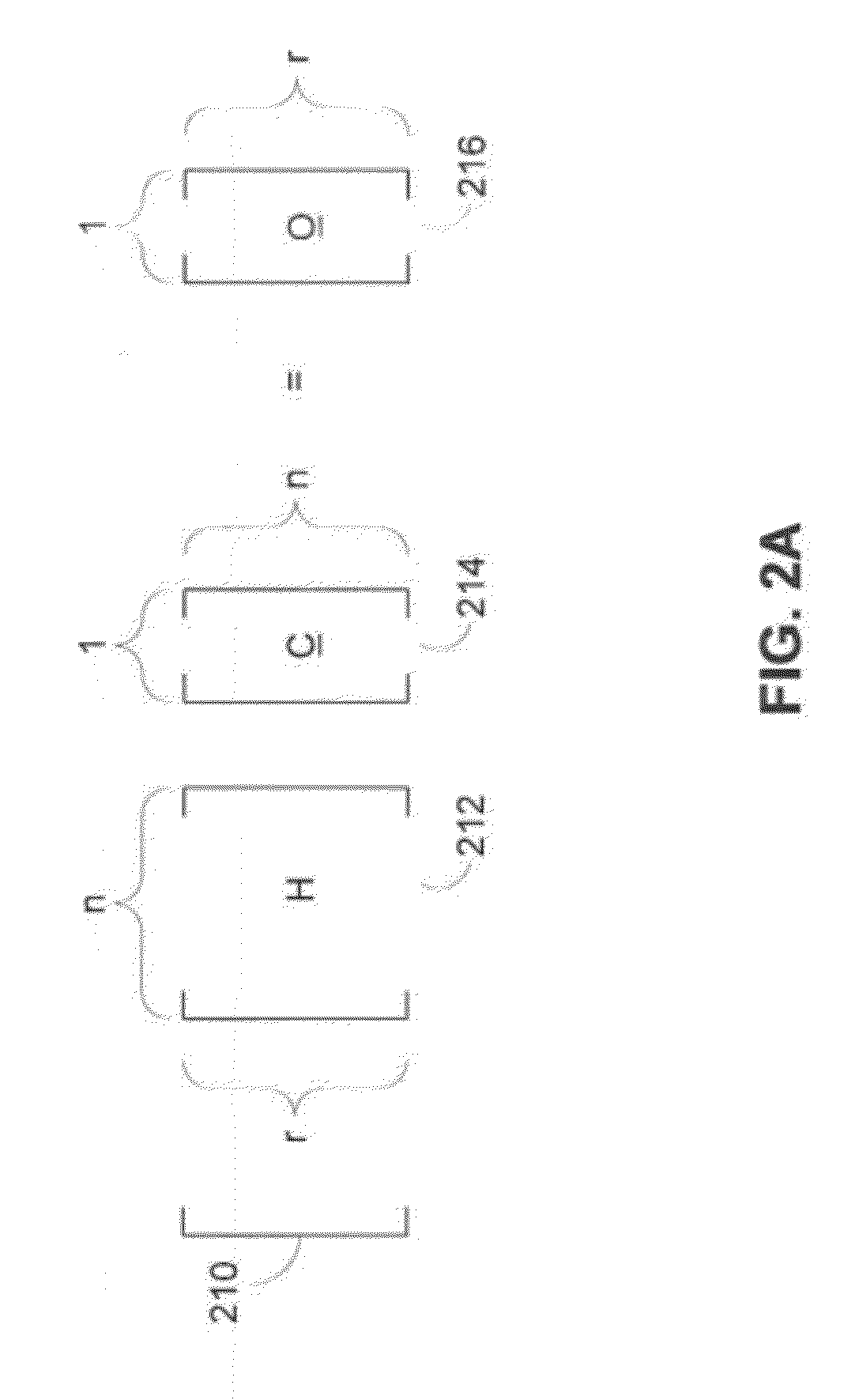[0012]Accordingly, systems and methods are disclosed that provide optimizations in the precision of a-posteriori P type messages computed by the variable nodes and the precision of the Q type messages that are passed from the variable nodes to the check nodes in the
message passing algorithm used by the iterative decoder for LDPC codes. Selecting precisions according to this disclosure may provide optimized performance of iterative decoders in the
error floor region of the performance curve of a LDPC code.
[0013]Embodiments are provided to avoid catastrophic (propagating) errors in the layered iterative decoder. For example, P and / or Q type messages in the layered iterative decoder may be “freezed” as soon as those messages reach their saturation values. As another example, finite precisions for messages in the
message passing algorithm used by the iterative decoder may be selected to avoid the catastrophic errors altogether.
[0017]In some embodiments, such as in channels without memory, the precision of R type messages, PR, may be first selected or optimized, and then the precision of the computed a-priori LLRs (PLLR) may be selected. In order to substantially eliminate catastrophic (propagating) errors, the precision of P type messages may be set to: PP=ceil(log2(cw·2P<sub2>g< / sub2>+2P<sub2>LLR< / sub2>)), where cw is the largest column weight in the LDPC
parity check matrix. Moreover, if the
message passing algorithm update steps are scheduled so that Q type messages are stored in memory, the precision of Q type messages may be set to: PQ=ceil(log2((cw−1)·2P<sub2>g< / sub2>+2P<sub2>LLR< / sub2>)). Selecting the precisions of messages in this way may ideally avoid catastrophic errors. It may also reduce the occurrence of near-codeword failures, which may be a dominating factor in the performance of a LDPC code in the error floor region.
[0018]In some embodiments, such as in channels with memory, a precision for P type and Q type messages, PP and PQ respectively, may be chosen together with the precision of the LLRs received from a channel
detector (i.e. S type messages with precisions PS), and / or together with the precision of output messages from the ECC decoder back to the channel
detector (i.e. Le type messages). For iterative decoders used in channels with memory, the precision of S type messages (PS) may be reduced, if desired. There may be a
gain or loss in the performance of the LDPC code due to this reduction. Reducing PS may, however, mitigate the effects of improper LLRs (such as defect LLRs, for example) that may be produced by a channel detector (e.g. due to defects present in the received vector).
[0019]For example, the precision of R type messages may first be selected or optimized; the precision of Le type messages may be set to PLe=PR+ceil(log2(cw)), and the precision of S type messages, PS, may be set. For example, this precision may be set so that PS≦PLe Then, the precision of P type messages may be set to: PP=ceil(log2(cw·2P<sub2>R< / sub2>+2P<sub2>S< / sub2>)) and the precision of Q type messages may be set to: PQ=ceil(log2((cw−1)·2P<sub2>R< / sub2>+2P<sub2>S< / sub2>)). Setting precisions in this way may ideally avoid catastrophic errors are avoided altogether. This may also reduce the occurrence of some near-codeword failures, which may dominate the LDPC code performance in the error floor region.
[0021]Yet another embodiment relates to a layered iterative decoder that “freezes” any P type (and / or Q type) message (i.e. stops the message from changing value) as soon as that message becomes saturated (i.e. there are insufficient bits to hold the information in the message) in the layered iterative decoder. This may result in reducing or entirely eliminating catastrophic (propagating) errors in the layered decoder. P type and / or Q type messages may be set to smaller precisions (PP and PQ, respectively). For example, PP may be set so that PP<ceil(log2(cw·2P<sub2>R< / sub2>+2P<sub2>S< / sub2>)), and PQ may be set so that PQ<ceil(log2((cw−1)2P<sub2>R< / sub2>+2P<sub2>S< / sub2>). More specifically, the precisions for P type messages may be set as PP=ceil(log2(cw·2P<sub2>R+< / sub2>2P<sub2>S< / sub2>))−1 or PP=ceil(log2(cw·2P<sub2>R< / sub2>+2P<sub2>S< / sub2>))−2. Setting the precisions of the P type messages in this manner may avoid catastrophic errors if it is possible to freeze the P type messages. However, using reduced precisions, and not freezing the P type messages, may not avoid catastrophic errors.
 Login to View More
Login to View More  Login to View More
Login to View More 


